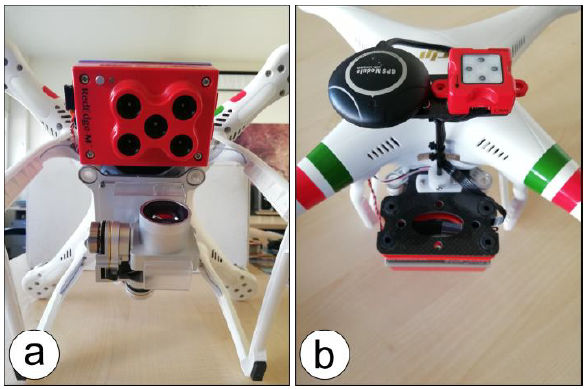Multispectral UAV monitoring of submerged seaweed in shallow water in the lagoon of Goro
Abstract
The sudden algal bloom in shallow water may be a serious problem for sea coastal economy based on clams farming because it leads quickly to anoxia conditions with the consequent death of the mollusks. In order to detect the rise of algae, normally the satellite remote sensing is used, exploiting the higher response in the near infrared wavelengths. A recent progress in monitoring this phenomenon derives from the availability of Unmanned Aerial Vehicles (UAVs) equipped with lightweight multispectral cameras. Such technique makes it possible to acquire detailed spectral information with narrow bands attaining an assessment of the algal bloom at both high geometric and radiometric resolutions. In this work, we tested the MicaSense RedEdge-M multispectral camera mounted on a DJI Phantom 3 Professional aircraft to map submerged seaweeds and assess their evolution. In fact the spread of seaweeds is very rapid, therefore it is particularly important to predict it in advance, by detecting the seaweeds when they are still submerged. The case study is the lagoon of Goro (Northern Adriatic Sea, Italy), a crucial environment for the clams farming characterized by a balance particularly delicate because of both the freshwater coming from the Po River and the saltwater ingression caused by the tidal cycles of the Adriatic Sea. The digital images acquired in two subsequent flights were processed either with Agisoft PhotoScan PRO and Pix4D Mapper Pro. All the tests performed in this study confirm that the monitoring over time with a multispectral lightweight camera mounted on a UAV is possible, but the solely application of a proper radiometric calibration (using a Downwelling Light Sensor and a known reflectance panel) gives the most accurate and reliable results.
Downloads

Downloads
Published
How to Cite
Issue
Section
License
Copyright (c) 2019 Yuri Taddia, Paolo Russo, S Lovo, Alberto Pellegrinelli

This work is licensed under a Creative Commons Attribution-ShareAlike 4.0 International License.



